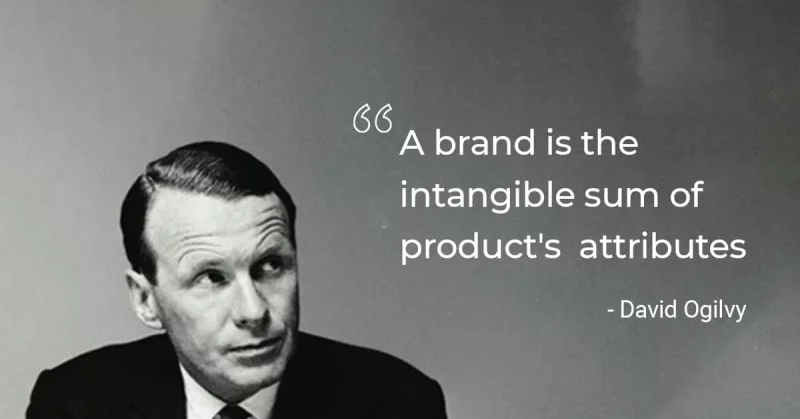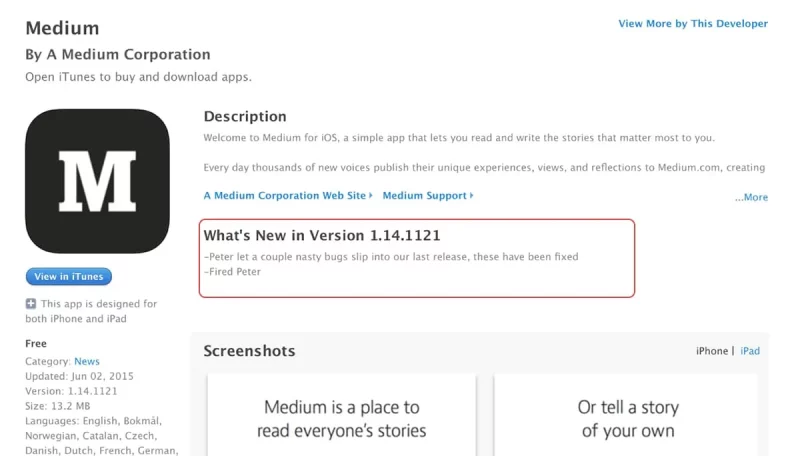
To understand brand strategy and how to build a strong brand strategy , Malu would like to share in detail in the article below.
First, the concept of a brand needs to be fully understood. Branding is more than just a logo, color, or tagline.
1. What is a brand?
There are many different ways to define a Brand. In its infancy, David Ogilvy – the father of advertising defined a Brand as ” a set of qualitative elements of a product .” From an audit perspective, a brand is “ a trademark and all associated values ”.

Later, as the field of “branding” grew, many managers defined brand as “the perception of the brand in the mind of the customer .”
Brands can be defined in many different ways, but in essence, brands have a strong connection with customers. They are concepts formed in the mind of the customer.
And to build that “concept”, “perception”, businesses can use many methods and tools, both tangible and intangible.
2. What is brand strategy?
In essence, a brand strategy is a plan that includes specific, long-term goals that can be achieved with the development of a successful brand.
A well-defined and executed brand strategy affects all other aspects of a business, helping businesses build effective, lasting connections with consumers in a competitive environment.
So to help you rein in what many marketers consider more of an art than a science, we’ve broken down seven essential components of a comprehensive brand strategy that will help keep your company Long-term survival.
3. Why is it necessary to build a brand strategy?
To answer why it is necessary to build a brand strategy before embarking on specific methods and tactics, we need to return to the meaning of “strategy”.
The concept of “strategy” comes from the military field, which is the method of winning a war. And “Brand Strategy” is the winning method in the brand war.
A strategy is a program or action plan to achieve a specific, long-term goal and includes measures and ways to achieve that goal.
Brand strategy is determined by the level of management, business leadership. The brand strategy is then disseminated in the organization, especially those directly implementing it, helping them understand what the business is branding for? What goal? What is the direction to achieve that goal?
The brand strategy is like a manager who is always beside to guide, orient, and guide the behavior of not only employees directly, but also the entire organization to build the brand as a collective. unified.
On the contrary, when there is no copy of the brand strategy – all branding orientations are not standardized, lack of grounds when communicating, assigning tasks, comparing, leading to fragmented or even disjointed execution. when building a brand.
4. How does the brand strategy help the business?
Basically, brand strategy is the key to winning in branding, and this has a strong impact on your business.
There are a few things you might notice right away:
- Clarifying the difference compared to competitors, making it easier for customers to recognize and remember your brand/product
- Employees know how to deploy more effectively, know what to focus on. Increase productivity and save costs for businesses
- All employees in the organization can read, reconcile, and adjust behavior accordingly. This creates consistency, taking advantage of the power of the collective to elevate the business.
- Adjust staff behavior when communicating with customers to make the customer experience better. From there, the conversion rate is higher, along with the ability of customers to buy again and again.
- Shorten the integration time of new employees. Corporate culture orientation.
- Reduce the time for meetings and debates because almost everything is clear in the strategy sheet.
- The Brand Strategy Sheet is the best guide when it comes to logo design , brand identity design or website design . Improve communication in the project, speed up the implementation process, shorten the time to launch…
- When designing images, advertising messages – Advertisers/Designers can compare with the strategy to create materials that are more suitable for the target customer insight. This directly increases advertising effectiveness, reducing marketing costs. Higher MROI, Higher ROI
- ….
There are many other benefits that a brand strategy can bring back to your business.
5. What does brand strategy include?
Brand strategy includes many different components, of which there are 10 main components:
- Target market
- Target customer portrait
- Brand core
- Brand difference
- Brand benefits
- Brand Positioning
- Brand model
- Brand personality
- Brand tone
- Brand architecture
> Read more about the Brand Strategy Template to better understand the 10 components above
Note: In each specific context, businesses can add other components to better clarify the brand strategy.
And to develop an effective brand strategy, you need to pay attention to the 7 elements that need to be satisfied of a brand strategy copy.
6. 7 criteria that make up a strong brand strategy
With just a few simple instructions on the internet, you can know how to create a brand strategy, but whether a brand strategy is strong enough to serve your business or not, you need to consider through 7 criteria:
Criterion 1: Clear purpose
Every brand promises something. But in a competitive market making a generic promise no longer works, it must have a clear purpose.
In other words, the more clearly the brand’s purpose is expressed, the easier it is for customers to recognize you among hundreds of competitors.
According to Business Strategy Insider , purpose can be viewed in two ways:
- Function: Looking at the function of the business (eg business, making money)
- Intentional: Seen in terms of the business’s contribution or direction (eg: Helping the world)
While making money is important to almost any business, customers have always admired brands that value values other than profit, like IKEA:

As you can see, IKEA builds on their brand as the “creating a better everyday life” brand.
While monetization is still their aim, this approach is appealing to potential customers, as it demonstrates their commitment to providing value beyond selling.
Therefore, when defining your business purpose, keep this example in mind. Although making money is a top priority, operating only with that concept is difficult to win the support of customers.
HOW TO APPLY : As you define your business purpose, refer to the brands you admire. See how they are writing their vision, mission, and slogan/tagline.
Criterion 2: Consistency
A strong brand strategy needs to be consistent. And the key to consistency is to avoid talking about things that are irrelevant or exaggerating about your brand.
You have posted an image on your Fanpage – Is this image related to what brand you want to build? Does it represent a brand personality or is it just a humorous image (the role model you are not aiming for) that confuses customers?
To build a solid brand, you need to make sure that when you execute it, all of your messages are coherent.
And to get it right, it’s important to start with a consistent strategy.



Manchester United builds a consistent image across platforms
To avoid confusing yourself. Create a clear brand guidelines – Brand Guidelines
Brand Guidelines can include everything from the tone of voice the brand will use to the color scheme of the images to the fonts, and more.
This guide ensures that every member involved in branding is “unified in language”, “in unison” to create a powerful resonance.
> Read more: What is the Brand Guideline?
Criterion 3: Emotions
Humans are not always rational.
In Maslow’s 5 hierarchy of needs, social, relationship and emotional needs rank third, after safety needs and physiological needs.
This is a common need, not too difficult and not too expensive to satisfy.
According to research from psychologists Roy Baumeister and Mark Leary : “Humans have a basic psychological need to feel closely connected with others, and to provide care and affection from relationships. Intimacy is a major part of human behavior.”
Therefore, your brand strategy needs to carefully consider this issue.
HOW TO APPLY : Find a way to connect with your customers on a deeper, more emotional level. Does your brand give them peace of mind? Make them feel like part of the family? Do you make life easier? Use emotional triggers like these to strengthen your relationship and foster loyalty.
In this case, your brand through different methods and tools to build its own brand personality, with a suitable brand model.
It is important to be clearly defined in the strategy document for effective implementation.
Read more:
- What is brand personality ?
- What is brand archetype ?
- What is Mascot? – Solution to humanize the brand
Criterion 4: Flexibility
Brand strategy is a long-term plan and orientation, but the world changes continuously in a short time. Therefore, the strategy must be flexible so that the brand is always relevant.
However, “How can you maintain consistency while remaining flexible?”
This is a good question.
While consistency is intended to set the standard for your brand, flexibility allows you to act accordingly in specific situations.
In other words, communication and branding campaigns need to be consistent to build strong brand awareness, but be flexible, not mechanical to keep the brand alive.
HOW TO APPLY : Instead of giving all the rules that must use A, do not use B. Add do’s and don’ts to make your brand strategy more flexible.
On the plus side, strategic flexibility makes it possible for your media team to generate more groundbreaking media ideas.
Read more:
Criterion 5: Employee Engagement
As shared above, consistency is important if you want to build a strong brand.
Consistency here includes having your staff well versed in how they should communicate with customers and every employee being a brand ambassador.
I know, a lot of managers want this. But really, that wish is not easy to achieve.
Take an example like this, if your brand is cheerful and vibrant on social media, why are support staff often apathetic, irritable, and abusive.
Or if you always say your business has a friendly work environment, then why don’t I see your employees feel free to share that?
This is a difficult problem.
But there is an answer.
One of the best solutions is to get your employees involved in the branding process. Make them feel, the brand they built with their own hands.
HOW TO APPLY : Get employees’ opinions from the very beginning of building a brand strategy, create a core team for them to spread internally on your behalf. In addition, always encourage the contribution of employees (old & new) on how to better build the brand to achieve the ultimate goal.
Criterion 6: Loyalty
When building and developing a brand, if you find people who love your brand, love your company. What do you plan to do next?
Or have you never had a plan for this important target group?
These customers are tirelessly telling their friends and colleagues about your kindness. They tell their trustees how satisfied they are with your products & services.
However, you have no plan of action in response.
If a brand strategy doesn’t take this into account, I think it’s a seriously flawed plan.
Loyal customers bring a lot of value to your business – you should do something worthy.
And there needs to be a plan to generate more such customers.
Sometimes all it takes is a thank you post on social media. Or send them a personalized email saying you appreciate them for choosing you.
In your brand strategy, I don’t think you need to specify what needs to be done. Just be aware of the loyalty and orientation in the stakeholders towards that goal.
Criterion 7: Awareness of competition
See competition as a challenge to improve your brand strategy. Be aware of how competitive you are working in a competitive environment, how fast the change… to find valuable strategic direction.
You are doing business with many competitors, pursuing the same customer group, even having stores next to each other. So do you know some of the tactics they used successfully? What tactics did they use that failed?
>>> 3 Basic Steps To Help Brands Compete And Win
Observe and improve in your brand strategy.
When it comes to branding, however, look beyond. Don’t always just do “a little” better than your opponent.
Your brand needs many different things to make it easy for customers to distinguish you.

This is a famous update announcement of medium, they have 2 announcements:
- Peter let some nasty bugs get into our final release, these have been fixed
- Fired Peter
Note: Whether Mr. Peter exists or not, only Medium knows.
After that, a lot of brands also learned to do this:



It can be seen that businesses are constantly thinking of new strategies, both inside and outside the industry have interesting ideas. There is nothing bad if you learn and apply it properly, well aware of the competitive environment to find the right direction.
Ending
When your brand strategy meets the above 7 criteria, I believe that your branding process will be very successful.
Contrary to the traditional thinking that brand is a function of Marketing, at Malu , we believe that, in order to grow strong and long-term, brand is the core foundation that determines all different activities. of the enterprise.




![[Case Study] – Muji's global branding strategy 8 jw 5d149006194433.41584320](https://maludesign.vn/wp-content/uploads/2022/08/jw-5d149006194433.41584320-500x496.jpeg)